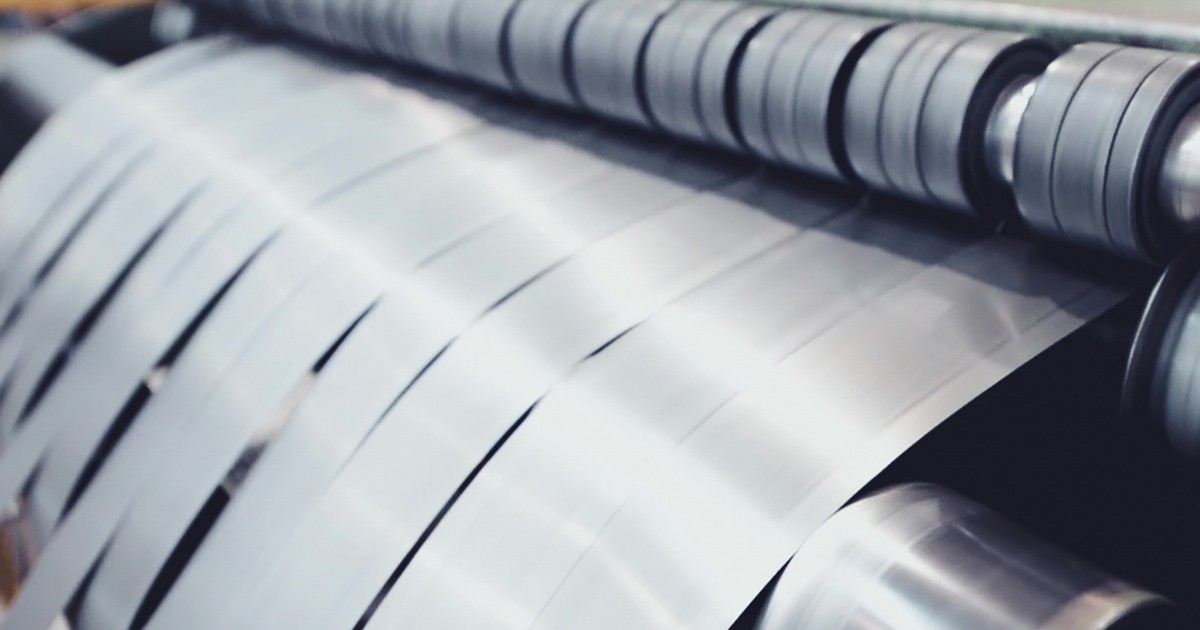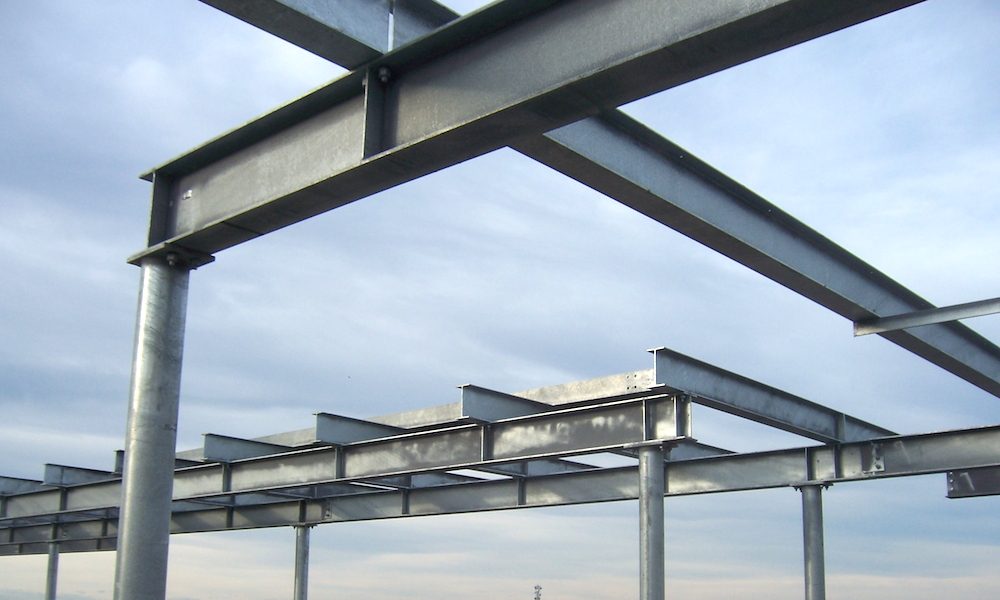Galvanized steel is a kind of steel coated with zinc to protect it from corrosion. This process, known as galvanization, involves immersing the steel in a bath of molten zinc. The resulting coating creates a barrier between the steel and the elements, making it resistant to rust and other forms of corrosion. It has been used for centuries in construction, industrial applications, and art.
Definition of Galvanized Steel
Galvanized steel is part carbon steel group. It is coated with zinc through a process called galvanization. This coating protects the underlying steel from corrosion by acting as a sacrificial anode – meaning that if any moisture or other corrosive substance touch the surface of the metal, it will erode the zinc coating before affecting the underlying steel.
The zinc coating depends on the protection level required for specific applications. Additionally, different methods can be used to apply this coating – such as hot-dip galvanizing, electro-galvanizing or mechanical galvanizing – each with its advantages and disadvantages.
Brief History of Galvanized Steel
They protect iron and steel from rust, dating back thousands of years. One method used by ancient civilizations was to coat iron objects with wax or oil to prevent moisture from reaching them.
However, modern galvanization techniques were not developed until much later. 1742 French chemist Paul Jacques Malouin discovered that dipping iron into molten zinc created a protective layer against corrosion.
The first patent for hot-dip galvanizing was granted in England in 1837; this method involves immersing iron or steel in molten zinc at around 450°C. Since then, galvanized steel has become ubiquitous across industries because of its durability and low maintenance requirements.
Importance of Galvanized Steel in Modern Times
It is widely used in modern construction, industrial applications, and art. Its corrosion-resistant properties are ideal for outdoor structures such as fences, balconies, and roofing. Additionally, galvanized steel is used extensively in the automotive industry due to its ability to withstand harsh weather conditions and high levels of wear and tear. In recent years, the use of galvanized steel has increased dramatically due to a growing awareness of environmental concerns.
Companies can reduce their carbon footprint by choosing galvanized steel over other materials that require frequent maintenance or replacement due to corrosion or rust. Overall, galvanized steel remains essential for industries because of its excellent corrosion resistance properties, durability, and cost-effectiveness.
Advantages of Galvanized Steel

Corrosion Resistance: The Secret Behind Galvanization
Galvanization is a process that involves coating steel with a layer of zinc, which provides the steel with an extra layer of protection. Corrosion resistance is a significant benefit of galvanized steel. When exposed to corrosive elements, ungalvanized steel can corrode rapidly. On the other hand, galvanized steel has superior properties, making it perfect for harsh environments.
The layer of zinc coating on the surface of galvanized steel serves as a barrier between the metal and its environment. Even if scratched or damaged, this layer remains intact and protects against rust and other forms of corrosion. This is because zinc corrodes much more slowly than iron or steel. Applications that benefit from corrosion resistance properties include outdoor structures such as bridges, guardrails, lamp posts, pipes, and tanks for storing liquids like water or chemicals.
Durability: The Longevity Advantage
Galvanized steel is incredibly durable thanks to its ability to withstand harsh environmental conditions. Galvanization increases the lifespan of products made from this material by up to 50 years compared to ungalvanized products. The durability advantage also makes galvanized steel ideal for outdoor applications such as fencing materials used in horse enclosures or agricultural equipment exposed to weather conditions like rain or snow.
Examples:
– Fencing materials – Agricultural equipment – Marine Construction
Cost-Effectiveness: A Wise Investment Choice
Galvanizing processes are cost-effective compared to other forms of metal protection, such as painting or powder coating. The upfront costs could be higher; however, overall cost savings occur due to lower maintenance costs and the extended lifespan of galvanized steel products.
The cost-effectiveness of galvanizing is especially evident in environments with high humidity, saltwater exposure, or harsh chemicals that can accelerate corrosion. These products have a lower life-cycle cost, which makes them more affordable.
Examples:
– Electrical transmission towers – Highway safety barriers – Construction industry
Disadvantages of Galvanized Steel

Galvanized steel has many advantages, but like any other material, it also has disadvantages. In this section, we will explore the disadvantages associated with this kind of steel.
Environmental Impact
Although galvanization effectively protects the steel from corrosion, the process can significantly impact the environment. The production process involves using chemicals such as zinc and hydrochloric acid.
These chemicals can cause air pollution and are classified as hazardous waste. Additionally, during the galvanizing process, wastewater contains high levels of pollutants.
The impact can be significant if proper measures are not taken to mitigate these effects. Emissions from this process can contribute to smog formation and acid rain if released into the atmosphere unchecked.
Furthermore, wastewater containing high levels of pollutants can affect nearby waterways leading to pollution and damage to aquatic life. There are several approaches that manufacturers may consider, such as using eco-friendly alternatives in their manufacturing processes or implementing effective wastewater treatment plans to reduce or mitigate the environmental impact caused by the production of galvanized steel.
Difficulty in Welding and Painting
Another disadvantage of galvanized steel is that it poses challenges when welding or painting is required, limiting its versatility for specific applications. The zinc coating on galvanized steel makes welding difficult due to its high melting point compared to carbon steel.
This makes it more challenging for welders who need higher heat input to join pieces together. Moreover, painting over a zinc coating on surfaces requires careful preparation because any contaminants present can prevent proper adhesion leading to premature coating failure.
This added preparation time increases costs and complexity, making it less attractive for some applications than other materials. It is essential to take additional steps such as preheating and using specialized welding processes such as MIG (Metal Inert Gas) or TIG (Tungsten Inert Gas) welding, which can provide higher heat required.
Additionally, proper surface preparation should be carried out before painting, which involves removing surface contaminants and roughening the surface to improve the adhesion of paint coatings. While it has many benefits, such as corrosion resistance and durability, it also has disadvantages.
However, these disadvantages can be mitigated through proper planning and implementation of best practices. Using eco-friendly alternatives and effective wastewater treatment plans with challenges associated with welding and painting on surfaces can be overcome by applying specialized techniques like preheating or using specific paints formulated for this application.
Summary of the Advantages and Disadvantages
The advantages of using galvanized steel make it ideal for use in outdoor environments or where moisture is a concern. Its durability ensures that structures made with this material will last many years.
Using galvanized steel can be more cost-effective than other methods because it requires less maintenance. There are some disadvantages associated with using galvanized steel.
One major drawback is its environmental impact due to the processes involved in producing this material. Also, welding and painting can be challenging due to their unique qualities when dealing with galvanized steel.
Final Thoughts on The Importance and Future of Galvanized Steel
Despite its disadvantages, galvanized steel remains essential in many industries due to its unique properties. Some challenges may eventually be overcome.
Overall, galvanization has proven helpful for generations through its contribution towards safety needs; thus making it still relevant despite modern challenges or alternatives available today. The continued availability of Galvanized Steel ensures that safety remains an affordable luxury everyone deserves access to; while protecting us from harsh elements like rusting and corrosion, mainly when used in places where conditions could cause damage if left unprotected.
Galvanizing’s benefits continue making it an attractive option for those looking for durable, long-lasting solutions without compromising safety or cost. Galvanized Steel is here to stay, and as long as it remains relevant, we will continue to see its use in many applications where it provides an unmatched level of protection and strength.
Reference:
1. American Galvanizers Association – https://galvanizeit.org/
The American Galvanizers Association (AGA) is a non-profit organization that provides authoritative information about hot-dip galvanizing, a process used to coat steel with zinc to prevent corrosion. Their website offers a wealth of information on galvanized steel, including how it’s made, its properties, and its applications.
2. ASTM International – https://www.astm.org/
ASTM International is a globally recognized leader in the development and delivery of voluntary consensus standards. They offer a range of standards related to galvanized steel, including ASTM A123/A123M, which specifies the requirements for hot-dip galvanized coatings on iron and steel products.
3. Steel Market Development Institute – https://www.steel.org/
The Steel Market Development Institute (SMDI) is a business unit of the American Iron and Steel Institute (AISI), and they provide information on a range of steel products, including galvanized steel. Their website offers technical resources, industry news, and market data related to galvanized steel.
4. International Zinc Association – https://www.zinc.org/
The International Zinc Association (IZA) is a non-profit organization that promotes the use of zinc and its alloys through advocacy, technology development, and education. Their website provides information on the benefits of zinc coatings, including hot-dip galvanizing, for steel and other metals.
These links should provide you with authoritative information on galvanized steel from a range of sources, including industry organizations, standard-setting bodies, and advocacy groups.
Our Locations
Get a Quote Now
